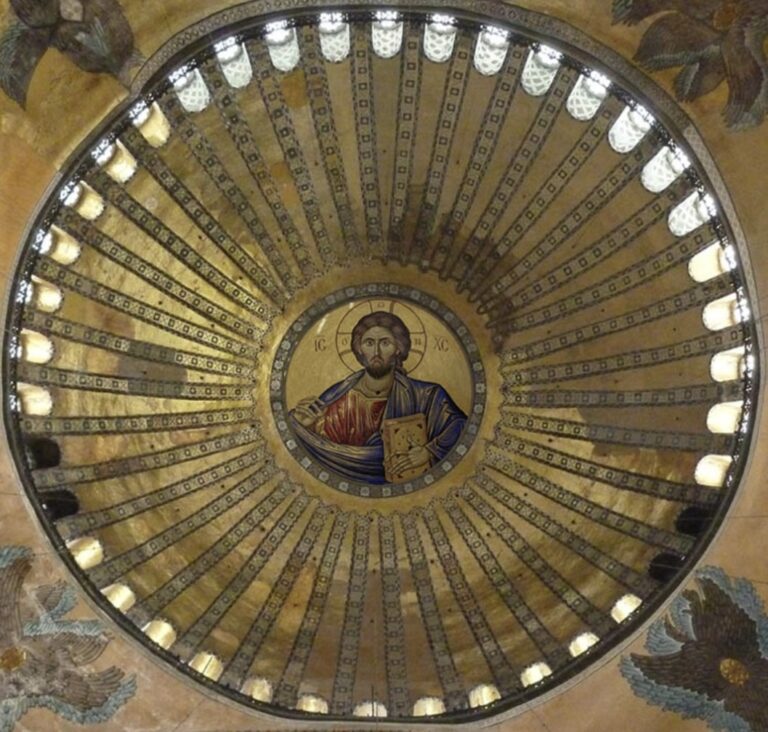
Imagine standing in a space where emperors once knelt, where whispers of ancient prayers still seem to echo through golden mosaics and marbled halls. That place is Hagia Sophia, one of the most spellbinding monuments in the world—and its story begins long before the domes and minarets ever pierced the Istanbul skyline.
The Spark: Constantine the Great’s Vision
In the 4th century, Emperor Constantine the Great founded the city of Constantinople, aiming to make it the new Rome. He envisioned a great Christian empire, and with that, a grand church at its heart. Though Constantine laid the groundwork, it was his son, Constantius II, who completed the first church on the site of Hagia Sophia in 360 AD. That church, humble by today’s standards, stood as a symbol of a rising faith—Christianity, now no longer a persecuted religion but one intertwined with imperial power.
But the Hagia Sophia you know today isn’t that first church. Or even the second.
Fire, Faith, and Justinian’s Monumental Ambition
The original Hagia Sophia burned during riots. Its replacement, built under Theodosius II, also succumbed to flames in 532 AD, during the Nika Riots—a violent uprising that nearly ended Emperor Justinian’s reign.
Instead of retreating, Justinian dared to dream bigger.
Within weeks, he commissioned what would become the most daring architectural feat of the ancient world. Architects Anthemius of Tralles and Isidore of Miletus were tasked with building not just a church, but a statement: the heavenly made real on Earth.
In 537 AD, when the third Hagia Sophia was completed, Justinian is said to have stepped into the shimmering space and declared, “Solomon, I have surpassed you.” With a vast central dome that seemed to float by divine will, supported by hidden engineering genius, Hagia Sophia stunned all who entered. It was the crown jewel of Eastern Christianity, the seat of the Ecumenical Patriarch, and a sacred space unmatched in scale or splendor.
Why Christians Hold It Sacred
For nearly 1,000 years, Hagia Sophia was the center of Eastern Orthodox Christianity. Every mosaic, column, and incense-scented chapel told stories from the Bible, celebrated saints, and echoed the beliefs of an entire civilization.
It hosted imperial coronations. It witnessed the Great Schism between Eastern and Western churches. It stood as a visual theology lesson: heaven above, earth below, united in sacred harmony.
Even after the Ottoman conquest in 1453, when Hagia Sophia was converted into a mosque, many of the Christian mosaics were plastered over, not destroyed—a quiet nod, perhaps, to the building’s spiritual gravitas.
Thomas Whittemore – The American Who Gently Peeled Back Time
Fast forward to the 1930s. A curious, scholarly man from Massachusetts named Thomas Whittemore, founder of the Byzantine Institute of America, obtained permission from Mustafa Kemal Atatürk, the founder of modern Turkey, to undertake a revolutionary task: uncovering Hagia Sophia’s long-hidden Christian art.
When the building was transformed into a museum in 1935, Whittemore and his team began delicately removing centuries of plaster that had hidden mosaics of Christ Pantocrator, the Virgin Mary, imperial portraits, and more. He approached the work with respect—not to erase the building’s Islamic history, but to reveal the layers of time and belief it held.
Thanks to Whittemore, the world got to see, once again, the mosaics that had dazzled medieval pilgrims, many untouched for nearly 500 years. His work didn’t just restore images—it rekindled global interest in Byzantine art and helped shape our understanding of the building’s deep, spiritual roots.
Today, Hagia Sophia is once again a mosque—but its Christian legacy remains embedded in its bones. A visitor might hear the call to prayer beneath the same dome where emperors once listened to Gospel chants. They might glance up and spot the Virgin’s face shimmering in gold high above the mihrab.
It’s a building that doesn’t belong to just one faith, empire, or century.
It belongs to history—layered, luminous, and alive.
And perhaps that’s what makes Hagia Sophia so compelling:
Every step inside is a step through time.
Travel Dispatch from Istanbul
by Guide Zafer
